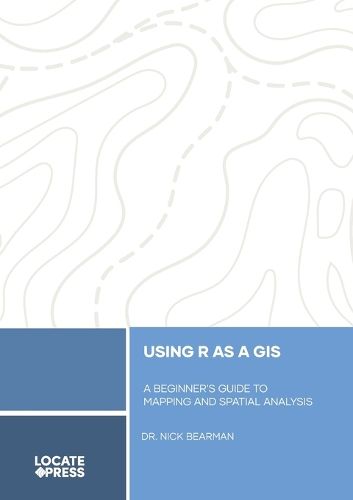Readings Newsletter
Become a Readings Member to make your shopping experience even easier.
Sign in or sign up for free!
You’re not far away from qualifying for FREE standard shipping within Australia
You’ve qualified for FREE standard shipping within Australia
The cart is loading…






This title is printed to order. This book may have been self-published. If so, we cannot guarantee the quality of the content. In the main most books will have gone through the editing process however some may not. We therefore suggest that you be aware of this before ordering this book. If in doubt check either the author or publisher’s details as we are unable to accept any returns unless they are faulty. Please contact us if you have any questions.
Discover how the R programming language can transform your GIS journey, enabling you to create maps, analyze spatial data, and unlock advanced geospatial insights-no prior experience needed!
This book introduces the scripting language R and how to use it as a GIS for managing, displaying, symbolizing, and analyzing spatial data. While R started as a statistics tool, it now rivals software like QGIS or ArcGIS Pro, offering spatial analysis and map creation.
We'll cover the basics of GIS and R, as well as advanced visualization and analysis techniques. No prior GIS or scripting experience is required, making this book ideal for beginners or those transitioning from desktop GIS to a script-based approach. Benefits of scripting include reusable code and easier knowledge sharing, such as sharing research project workflows.
Part 1: What is GIS & Spatial Data? - Essential GIS theory for success. Part 2: Spatial Data - Advanced maps using raster and vector data. Part 3: Advanced Concepts - Loops for repetitive tasks and data wrangling in R. Part 4: Project Management - File management, version control, R projects, and markdown workflows. Part 5: Next Steps - Tips for finding spatial data, progressing with R, and accessing help online.
Designed for those new to R or scripting, this book assumes no prior knowledge. Familiarity with GIS (e.g., QGIS or ArcGIS) helps but isn't required-we'll explain the key terms and concepts you need.
$9.00 standard shipping within Australia
FREE standard shipping within Australia for orders over $100.00
Express & International shipping calculated at checkout
This title is printed to order. This book may have been self-published. If so, we cannot guarantee the quality of the content. In the main most books will have gone through the editing process however some may not. We therefore suggest that you be aware of this before ordering this book. If in doubt check either the author or publisher’s details as we are unable to accept any returns unless they are faulty. Please contact us if you have any questions.
Discover how the R programming language can transform your GIS journey, enabling you to create maps, analyze spatial data, and unlock advanced geospatial insights-no prior experience needed!
This book introduces the scripting language R and how to use it as a GIS for managing, displaying, symbolizing, and analyzing spatial data. While R started as a statistics tool, it now rivals software like QGIS or ArcGIS Pro, offering spatial analysis and map creation.
We'll cover the basics of GIS and R, as well as advanced visualization and analysis techniques. No prior GIS or scripting experience is required, making this book ideal for beginners or those transitioning from desktop GIS to a script-based approach. Benefits of scripting include reusable code and easier knowledge sharing, such as sharing research project workflows.
Part 1: What is GIS & Spatial Data? - Essential GIS theory for success. Part 2: Spatial Data - Advanced maps using raster and vector data. Part 3: Advanced Concepts - Loops for repetitive tasks and data wrangling in R. Part 4: Project Management - File management, version control, R projects, and markdown workflows. Part 5: Next Steps - Tips for finding spatial data, progressing with R, and accessing help online.
Designed for those new to R or scripting, this book assumes no prior knowledge. Familiarity with GIS (e.g., QGIS or ArcGIS) helps but isn't required-we'll explain the key terms and concepts you need.